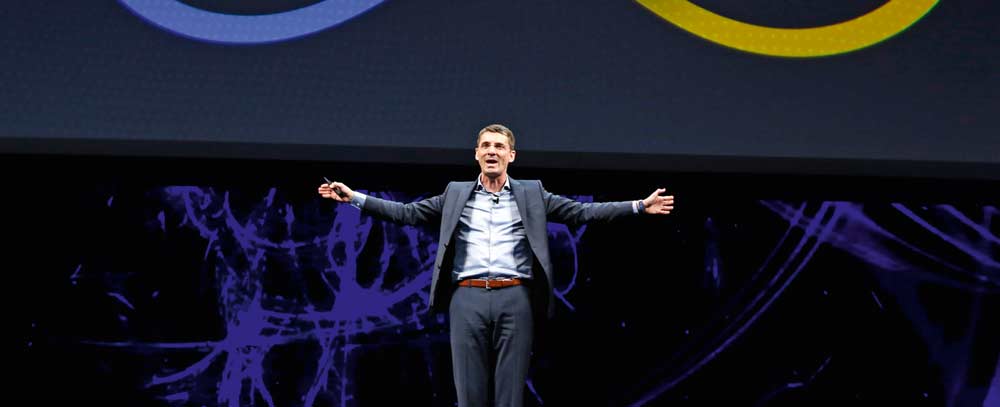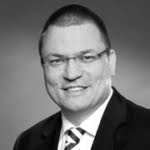Infinitely tedious


A single brief joint appearance by a Google manager and SAP Chief Technology Officer Bernd Leukert revealed the whole dilemma. SAP has lost its virtues:
A few years ago it was still called Hana Enterprise Cloud (HEC), then came the Hana Cloud Platform (HCP), now it's just called SAP Cloud and acceptance is so low that the ERP world market leader has to turn to AWS, Microsoft Azure and Google Cloud.
These three cloud offerings now make available what many years ago was the sole preserve of HEC under the leadership of former Chief Technology Officer Vishal Sikka.
But even SAP's cloud exit strategy only works to a limited extent: Together with Google, the joint offering was praised in Orlando and the first joint reference customer for a Hana and S/4 application from the Google Cloud was proudly presented:
It would be interesting to know whether the Sapphire audience is familiar with the reference customer Sovanta, the Heidelberg-based company of former SAP Executive Board member Professor Claus Heinrich.
Coincidence or was there no other "victim" in the world to provide a reference for Google and SAP?
And it continued in this non-transparent, blurred style: even after repeated questions from analysts, it was not really clear what Leonardo was until the end of Sapphire:
At the end of last year, Leonardo was still SAP's IoT initiative - the result of the acquisition of the American company Telit. Its first success was an IoT application including predictive maintenance for the Italian state railroad, which was proudly presented by Bill McDermott and Bernd Leukert at an IoT symposium in Rome.
Six months later, the Leonardo metamorphosis: the name now stands for a framework that can be used to develop just about anything - from IoT to big data, blockchain and machine learning.
Leonardo
As of now, Leonardo is SAP's innovation portfolio, a collective term for various things: Internet of Things, Machine Learning, Analytics, Collaboration, Big Data, Design Thinking, Blockchain and Data Intelligence.
Leonardo is based on the SAP cloud platform, which in turn can run in the SAP data center, on Microsoft Azure, AWS or the Google Cloud. The go-to-market strategy still seems quite dynamic - documents, website and presentation are not always congruent.
IoT is a sub-area of Leonardo - and also includes functions such as the reselling of Telit, a software for the bidirectional addressing of IoT devices. This serves to supply the underlying SAP services (Hana, analytics, machine learning, etc.) with the corresponding data - the crude oil - from which added value can then be created.
In these areas, SAP is of course in competition with established manufacturers of "things", e.g. Siemens, Bosch and General Electric. Market access over the next few years and the value proposition will be interesting here.
In future, SAP wants to focus on the digital core, future-oriented technologies and ERP expertise so that customers can make their business processes digital, programmable and more intelligent.
For cloud-based companies, SAP's open partner network and strong collaborations are critical to succeeding in today's global economy.
SAP is also addressing customers and their biggest challenges with two new initiatives. The SAP Cloud Trust Center and a new tool called SAP Transformation Navigator will give customers greater transparency and a better overview of the SAP product range.
Machine Learning
In addition to the Leonardo Machine Learning Foundation, the new developments include a range of new applications based on machine learning that support various areas of the company, from invoice verification and CV matching to customer service and customer loyalty.
The portfolio also includes an SAP Cloud Platform Blockchain Service for the development of application extensions and new solutions using distributed ledger technology.
As part of its IoT initiatives, SAP is also providing a new digital twin solution and other services that can be used to optimize asset management. At the same time, the SAP Leonardo partner network continues to grow; the latest cooperation partner is Deloitte.
The initial focus will be on IoT and intelligent solutions for industries, supply chain management and finance departments.
SAP Cloud Platform now offers a multi-cloud environment in which customers can develop and operate applications with infrastructure providers of their choice - such as SAP, Amazon Web Services, Microsoft Azure (beta) and Google Cloud Platform (demo installation).
Everything is controlled via the new SAP Cloud Platform cockpit. The SAP Cloud Platform, which is based on Cloud Foundry, comprises multilingual runtime environments, including Java, node.js and Hana XS Advanced.
Nvidia & SAP
Hasso Plattner's keynote speech was remarkable for its admission that Hana is not sufficiently suitable for machine/deep learning together with Intel's processors.
Machine learning, especially deep learning, requires a lot of computing power - which is why SAP is working with Nvidia to use their GPU clusters to provide the necessary computing power via Cuda.
Nvidia CEO Jensen Huang has already announced the intensified cooperation with SAP ahead of Sapphire. Nvidia and SAP are pooling their expertise in the fields of artificial intelligence (AI) and enterprise software to develop new business applications.
SAP benefits not only from the progress that Nvidia has made in the GPU area, but also from further developments in the software area. With DGX-1, for example, Nvidia offers a supercomputer that includes both hardware and a software suite. D
This also includes the deep learning SDKs, including the well-known deep learning frameworks. The applications that Nvidia and SAP have already developed, all of which are based on Nvidia's deep learning technologies, include
SAP Brand Impact (The application can measure the success of advertising measures such as displays at events. Users receive accurate and verifiable results within a very short time), Accounts Payable (This application can be used to automate the manual processing of invoices in companies and reduce errors.
The application selects relevant information on the invoice and classifies it. As a result, data is transmitted within a few seconds and cash flow is accelerated), SAP Service Ticketing (The solution enables automated handling of support requests and thus contributes to improved customer service. The application can be used to analyze unstructured data and create automatic rules to assign service tickets to specific categories and, in the next step, to the right people).
Naturally Hana
According to Hasso Plattner, Hana is now in calm waters, with the new hot standby technology also offering 100 percent availability.
On the subject of analytics, Plattner repeatedly emphasized the advantage of working directly on the original business process data. This saves the customer the time-consuming task of copying the data.
This will also be one of the temptations of the switch to Hana, that a steadily increasing proportion of analyses can be carried out directly without ETL. In the first step, even without the introduction of S/4.
For many customers in Orlando, the way to switch to Hana was the dominant topic. Solutions and ways are being sought constructively and this benefits the IaaS providers:
In order to avoid having to procure cost-intensive hardware in the preliminary projects, which may then not fit in terms of sizing, cloud offerings are also often tested for these non-productive projects. So you kill two birds with one PoC!
The switch to Hana and the use of cloud services are validated and the customer increases their scope and solution space.
Now that the ECC 6.0 port to S/4 is complete, new functionalities can be developed: The advantages of the switch to S/4 are accepted and perceived positively by many customers - however, the testing and ongoing optimization and adaptation of business processes present many customers with a hurdle, as the key users required for this are often hardly available.
The SAP cloud on the various IaaS solutions (Google, Azure, AWS) is seen and promoted as a platform, albeit still in very homeopathic doses:
There was only one reference customer for the Google/SAP cloud combination and that was a company owned by former SAP Executive Board member Professor Claus Heinrich. Google and SAP will have to step up their game considerably in order to gain ground against AWS and Microsoft Azure.






